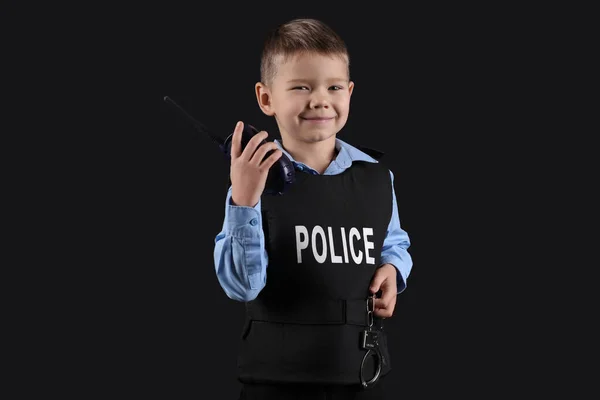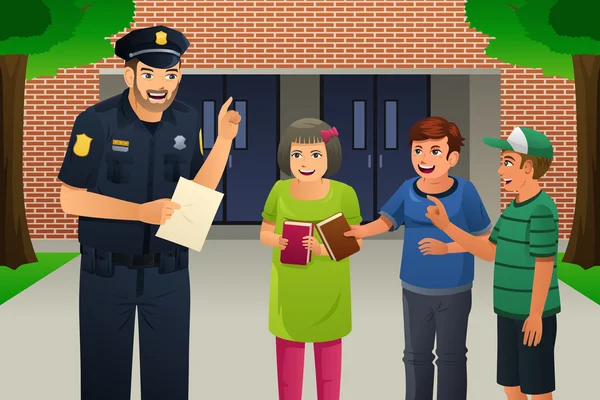What programs are effective in teaching students about crime and safety? Creating a safe and secure school environment is a multifaceted challenge that requires a comprehensive approach. Schools are not just places of learning; they are microcosms of society, and as such, they can be affected by crime. By implementing effective programs, schools can educate students about crime and safety, fostering a sense of responsibility and awareness.

Many school-based programs have proven effective in reducing crime and violence, highlighting the importance of education in crime prevention. These programs range from those that prevent bullying to those that teach adolescents about healthy relationships. Modifications to school curricula, such as the 4th R, have been shown to reduce sexual violence by 25%. The Life Skills Training curricula is another example, effectively reducing drug abuse and violence.
Examples of Successful Programs
- Big Brothers Big Sisters (BBBS): This program pairs at-risk youth (ages 6-18) with adult mentors to foster healthy relationships, reducing the likelihood of future violence and criminality. Research indicates that participation in BBBS can lead to a 46% reduction in drug use and a 32% reduction in violent behavior.
- Cure Violence: By using a public health approach, Cure Violence employs trained outreach workers, public education campaigns, and community mobilization to reduce shootings. In Chicago, this program led to a 34% decrease in shootings.
- SNAP (Stop Now and Plan): This program focuses on at-risk families, enhancing their skills in managing emotions in social situations, and has demonstrated a conviction rate reduction of nearly 50%.
- Active Assailant Response Series: These courses aim to raise awareness of participants in many different and difficult situations. Curriculum includes tips on what to do if presented with various active assailant scenarios; pre-attack cursors of active killers in the United States; how to intervene early to help others connect with resources.
What are the Best Ways to Prevent Crime at School?
Preventing crime in schools involves a combination of strategies, including:
- Policy and procedure enforcement Zero-tolerance policies toward weapons, alcohol, and drugs should be firmly enforced. Enforcing local laws and school policies helps create a safer environment.
- Training and Education Training staff and police officers in anger management skills and teaching these skills to students can be beneficial. Teachers should also be trained to handle situations such as fights or students bringing weapons to school.
- Community involvement All parents, students, school staff, and community members need to be part of creating safe school environments. The crime rate can decrease significantly when a violence prevention initiative is a community-wide effort.
- Physical and electronic security measures Schools can deter criminal activity by target hardening (locks, fences, window film), environmental design and maintenance (vegetation management, lighting, signage), and electronic systems (intruder detection, CCTV, access control).
In What Ways Does a Teacher Help to Reduce Crime in Society?
Teachers play a pivotal role in crime prevention by:
- Serving as positive role models By demonstrating respect, empathy, and responsibility, teachers can positively influence their students’ behavior.
- Creating a safe and supportive classroom environment When students feel safe and supported, they are less likely to engage in risky or criminal behavior.
- Integrating crime prevention into the curriculum Teachers can incorporate lessons on conflict resolution, anger management, and responsible decision-making into their teaching.
- Identifying and supporting at-risk students Teachers are often the first to notice signs of trouble in students’ lives and can connect them with the resources they need.
What Kind of Crime is Most Common in School?
While severe incidents such as school shootings capture headlines, the most common types of crime in schools include:
- Theft
- Vandalism
- Drug use
- Bullying
- Cyberbullying
Addressing these issues requires a combination of prevention, intervention, and disciplinary measures.
What are Three Different Ways Crime Prevention Strategies May Reduce Crime?
Crime prevention strategies can reduce crime through:
- Deterrence: Making potential offenders think twice before committing a crime by increasing the perceived risks and consequences.
- Target Hardening: Making it more difficult for offenders to commit crimes by increasing security measures and reducing opportunities.
- Addressing Root Causes: Tackling the underlying social, economic, and environmental factors that contribute to crime.
5 Ways of Preventing Crime in School
- Improve School Security: Implement measures such as controlled access, surveillance cameras, and security personnel to create a safer environment.
- Promote Positive Behavior: Encourage positive behavior through programs that reward good behavior and address bullying and conflict.
- Offer Support Services: Provide counseling, mentoring, and other support services to help at-risk students.
- Foster a Positive School Climate: Create a supportive and inclusive school climate where students feel connected and valued.
- Engage Parents and the Community: Involve parents and community members in school safety efforts to create a shared sense of responsibility.
Educational Approaches
Academics play a vital role in teaching crime prevention and criminal justice, using the E4J University Modules to provide teaching materials and resources. Active learning methods, such as problem-solving, discussions, and group work, engage students and encourage reflection and application of knowledge.

Examples of active learning assignments:
- Model United Nations Simulation: Students choose a crime prevention or criminal justice debate topic and a country to defend in a UN simulation.
- Pop Culture Analysis: Students discuss the portrayal of crime prevention and criminal justice issues in pop culture and their implications.
- Decision Cards: Students evaluate crime prevention scenarios and propose solutions, considering different viewpoints.
Community Engagement
Successful crime prevention involves engaging community residents and stakeholders to understand the drivers of crime in high-crime areas. Community-engaged participatory research combines crime data, design, and engagement to develop effective policies and strategies. By fostering a sense of community pride, schools can further enhance their overall security structure.
Also Read | Educational Programs for Juvenile Offenders: Reducing Recidivism and Enhancing Rehabilitation

